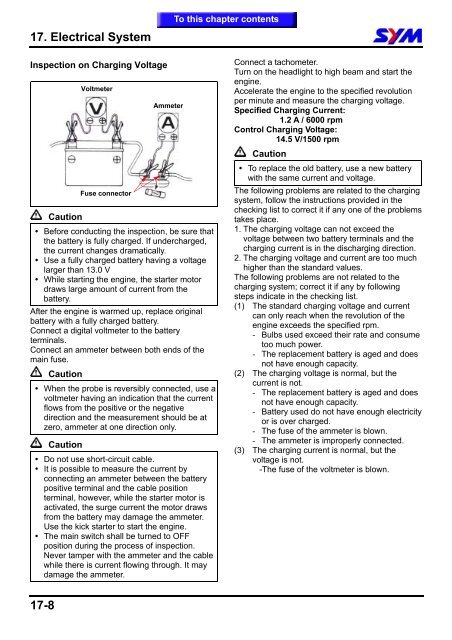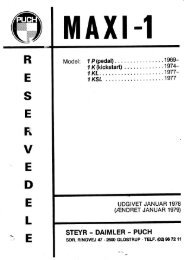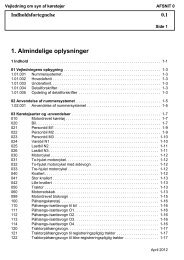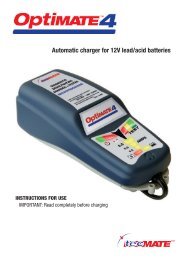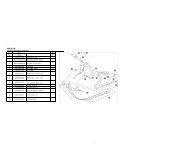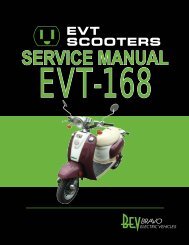Sym GTS servicemanual - Scootergrisen
Sym GTS servicemanual - Scootergrisen
Sym GTS servicemanual - Scootergrisen
Create successful ePaper yourself
Turn your PDF publications into a flip-book with our unique Google optimized e-Paper software.
17. Electrical System<br />
Inspection on Charging Voltage<br />
17-8<br />
Caution<br />
� Before conducting the inspection, be sure that<br />
the battery is fully charged. If undercharged,<br />
the current changes dramatically.<br />
� Use a fully charged battery having a voltage<br />
larger than 13.0 V<br />
� While starting the engine, the starter motor<br />
draws large amount of current from the<br />
battery.<br />
After the engine is warmed up, replace original<br />
battery with a fully charged battery.<br />
Connect a digital voltmeter to the battery<br />
terminals.<br />
Connect an ammeter between both ends of the<br />
main fuse.<br />
Caution<br />
� When the probe is reversibly connected, use a<br />
voltmeter having an indication that the current<br />
flows from the positive or the negative<br />
direction and the measurement should be at<br />
zero, ammeter at one direction only.<br />
Caution<br />
Voltmeter<br />
Fuse connector<br />
Ammeter<br />
� Do not use short-circuit cable.<br />
� It is possible to measure the current by<br />
connecting an ammeter between the battery<br />
positive terminal and the cable position<br />
terminal, however, while the starter motor is<br />
activated, the surge current the motor draws<br />
from the battery may damage the ammeter.<br />
Use the kick starter to start the engine.<br />
� The main switch shall be turned to OFF<br />
position during the process of inspection.<br />
Never tamper with the ammeter and the cable<br />
while there is current flowing through. It may<br />
damage the ammeter.<br />
To this chapter contents<br />
Connect a tachometer.<br />
Turn on the headlight to high beam and start the<br />
engine.<br />
Accelerate the engine to the specified revolution<br />
per minute and measure the charging voltage.<br />
Specified Charging Current:<br />
1.2 A / 6000 rpm<br />
Control Charging Voltage:<br />
14.5 V/1500 rpm<br />
Caution<br />
� To replace the old battery, use a new battery<br />
with the same current and voltage.<br />
The following problems are related to the charging<br />
system, follow the instructions provided in the<br />
checking list to correct it if any one of the problems<br />
takes place.<br />
1. The charging voltage can not exceed the<br />
voltage between two battery terminals and the<br />
charging current is in the discharging direction.<br />
2. The charging voltage and current are too much<br />
higher than the standard values.<br />
The following problems are not related to the<br />
charging system; correct it if any by following<br />
steps indicate in the checking list.<br />
(1) The standard charging voltage and current<br />
can only reach when the revolution of the<br />
engine exceeds the specified rpm.<br />
- Bulbs used exceed their rate and consume<br />
too much power.<br />
- The replacement battery is aged and does<br />
not have enough capacity.<br />
(2) The charging voltage is normal, but the<br />
current is not.<br />
- The replacement battery is aged and does<br />
not have enough capacity.<br />
- Battery used do not have enough electricity<br />
or is over charged.<br />
- The fuse of the ammeter is blown.<br />
- The ammeter is improperly connected.<br />
(3) The charging current is normal, but the<br />
voltage is not.<br />
-The fuse of the voltmeter is blown.


